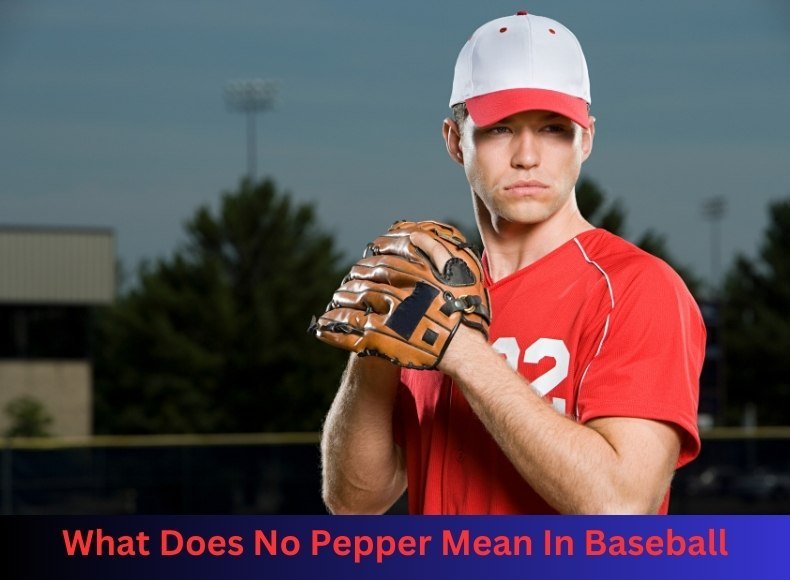Baseball, a sport steeped in tradition, has its fair share of unique practices and terms that may seem puzzling to newcomers. One such term is “No Pepper.” If you’ve ever attended a baseball game, you might have noticed signs around the field that read “No Pepper.” This seemingly odd prohibition has a rich history and practical reasons behind it.
In the early days of baseball, players often engaged in a game called “pepper” during warm-ups. This mini-game involved a batter and a few fielders. The batter would lightly tap the ball to the fielders, who stood close by, and they would throw it back quickly. It was a fast-paced, reflex-honing exercise that helped players sharpen their skills. However, as the sport evolved and stadiums became more crowded, concerns about safety and field maintenance led to the banning of pepper in many ballparks.
Understanding why “No Pepper” signs are ubiquitous in baseball stadiums requires a deep dive into the game’s history, the mechanics of pepper, and the practical reasons for its prohibition. This article aims to unravel the mystery behind “No Pepper” and explore its implications for players and fans.

Historical Context of Pepper in Baseball
Origins of the Pepper Game
Pepper has roots in the early 20th century when baseball solidified its place as America’s pastime. The game was a staple of pre-game routines and was beloved by players for its simplicity and effectiveness.
• Early References: Historical records show that pepper was already a common practice by the 1920s. Players used it to warm up their hands and sharpen their reflexes.
• Evolution: As baseball evolved, so did how players prepared for games. Despite this, pepper remained a constant, highlighting its enduring utility in player training.
The Role of Pepper in Player Training
Pepper wasn’t just a game; it was a critical training tool.
• Skill Development: Players used pepper to improve hand-eye coordination, quick thinking, and agility. It was particularly useful for infielders who needed to react quickly to ground balls.
• Famous Players: Legends like Babe Ruth and Lou Gehrig were known to partake in pepper, further cementing its place in baseball lore.
Understanding the “No Pepper” Sign
Introduction to the “No Pepper” Sign
The “No Pepper” sign is familiar in many ballparks, but its origins are practical rather than whimsical.
• Adoption: The sign became common in the mid-20th century as stadiums grew larger and more sophisticated.
• Stadiums and Leagues: Major League Baseball (MLB) and minor league stadiums alike adopted the sign to ensure consistency and safety across the sport.
Reasons Behind the Ban
The prohibition of pepper wasn’t arbitrary; it addressed specific concerns.
• Safety Concerns: Pepper involves rapid ball movement, which can pose a danger to nearby spectators and other players. A stray ball could easily cause injury.
• Field Maintenance: The constant pounding of balls on the same spot could damage the turf, leading to maintenance issues and potentially hazardous playing conditions.
The Mechanics of the Pepper Game
Basic Rules of Pepper
Understanding the basic rules of pepper sheds light on why it was so popular.
• Players and Equipment: Typically, pepper involves a batter and three to four fielders. The only equipment needed is a bat and a ball.
• Gameplay: The batter lightly taps the ball to the fielders, who then throw it back quickly. The aim is to keep the ball in play and maintain a fast pace.
Variations of the Pepper Game
Like many games, pepper has seen numerous variations.
• Regional Adaptations: Different regions developed their styles of pepper, each with unique rules and objectives.
• Popular Variations: Some variations involve more players or incorporate different types of throws and hits, adding layers of complexity to the game.

Impact of the Ban on Modern Baseball
Changes in Training Routines
The ban on pepper necessitated changes in how players prepared for games.
• Alternative Drills: Coaches introduced other drills that provided similar benefits without the associated risks. These include soft toss, tee work, and other agility exercises.
• Professional Practices: Modern teams use various high-tech training methods, from video analysis to specialized equipment, to prepare players for the demands of the game.
Fan and Player Reactions
The ban on pepper elicited mixed reactions from the baseball community.
• Historical Reactions: Many players and fans initially resisted the ban, viewing it as an unnecessary restriction on a beloved tradition.
• Present-Day Perspectives: Today, most accept the ban as necessary for safety and field preservation, though some still reminisce about the days when pepper was a common sight.
Common Misconceptions About Pepper
Myths and Facts
Pepper, like many aspects of baseball, is surrounded by myths.
• Debunking Myths: One common myth is that pepper was banned solely because it annoyed fans. In reality, safety and maintenance were the primary concerns.
• Clarifying Misunderstandings: Another misconception is that pepper is completely obsolete. While banned in many stadiums, it is still practiced in less formal settings.
Pepper vs. Other Baseball Drills
Comparing pepper to other drills highlights its unique benefits and limitations.
• Comparative Analysis: Pepper is excellent for developing quick reflexes but lacks the comprehensive training offered by modern drills.
• Advantages and Disadvantages: While pepper is simple and requires minimal equipment, it doesn’t provide the same level of targeted skill development as other exercises.
Pepper in Pop Culture
References in Movies and Media
Pepper has made its mark beyond the baseball field.
• Iconic Scenes: Films like “The Sandlot” and “Field of Dreams” feature scenes of pepper, showcasing its cultural significance.
• Influence on Entertainment: The game has inspired various forms of media, from TV shows to video games, reflecting its enduring appeal.
Pepper in Literature
Pepper’s influence extends to the literary world as well.
• Notable Books: Books like “The Boys of Summer” and “Moneyball” mention pepper, highlighting its role in baseball history.
• Literary Significance: Authors use pepper as a metaphor for teamwork, practice, and the joy of the game.
Safety Measures in Baseball
Evolution of Safety Protocols
Safety in baseball has evolved significantly over the years.
• Historical Measures: Early safety measures were rudimentary, focusing primarily on player equipment.
• Modern Practices: Today, safety protocols cover everything from protective gear to field maintenance.
Role of Signs and Warnings
Signs like “No Pepper” play a crucial role in maintaining safety.
• Importance of Signage: Clear, visible signs help prevent accidents and ensure everyone knows the rules.
• Other Common Signs: Besides “No Pepper,” signs like “No Running” and “Watch for Flying Balls” are also common in ballparks.
Pepper Game Revival
Grassroots Movements
Despite the ban, pepper has seen a revival in some circles.
• Local Leagues: Community leagues and youth programs often include pepper in their routines, recognizing its benefits.
• Impact on Youth Programs: Introducing young players to pepper helps them develop essential skills in a fun, engaging way.
Celebrity Endorsements
Some prominent figures in baseball continue to advocate for pepper.
• Famous Advocates: Players like Derek Jeter and coaches like Joe Maddon have spoken about the benefits of pepper.
• Public Campaigns: These endorsements often lead to public campaigns and events that promote the game.
Relevant Data Table
Comparison of Traditional Pepper Game and Modern Training Drills
| Aspect | Pepper Game | Modern Training Drills |
|---|---|---|
| Number of Players | 3-4 | Varies |
| Equipment | Bat, Ball | Varies (Tee, Nets, etc.) |
| Safety Concerns | High | Low |
| Effectiveness | High for Reflexes | High for Targeted Skills |
| Popularity | Declining | Increasing |
FAQs
FAQ 1: Why is pepper banned in most baseball stadiums?
Pepper is banned primarily due to safety concerns for spectators and players and field maintenance issues.
FAQ 2: Can pepper still be played in non-professional settings?
Yes, pepper is still prevalent in amateur leagues, youth programs, and informal settings where safety and field conditions are less concern.
FAQ 3: What are the benefits of playing pepper?
Pepper helps improve hand-eye coordination, quick reflexes, and agility, making it an excellent training tool for infielders.
FAQ 4: How has the ban on pepper affected player training?
The ban has led to the adoption of alternative drills and exercises that provide similar benefits without the associated risks.
FAQ 5: Are there any professional players who still advocate for pepper?
Yes, some professional players and coaches continue to advocate for pepper, recognizing its historical significance and training benefits.
Conclusion
The “No Pepper” sign in baseball stadiums is more than just a quirky rule; it reflects a balance between tradition and practicality. While the game of pepper played a crucial role in the early days of baseball, modern safety and maintenance concerns necessitated its ban. However, the spirit of pepper lives on in various forms, from informal games to modern training drills. Understanding the history and reasons behind the “No Pepper” rule enriches our appreciation of baseball’s rich tapestry of traditions.
